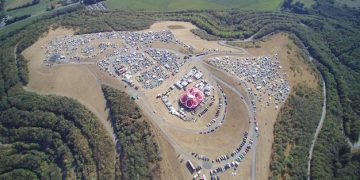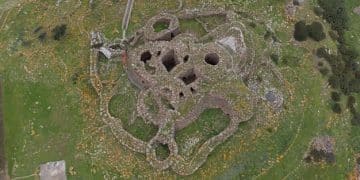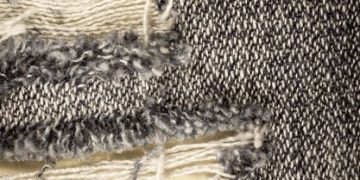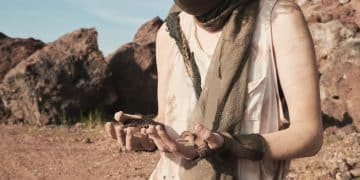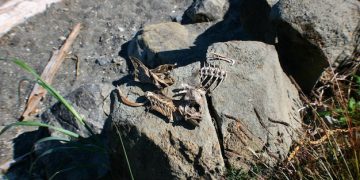Unearthing Pre-Columbian Conflict: An Archaeological Deep Dive
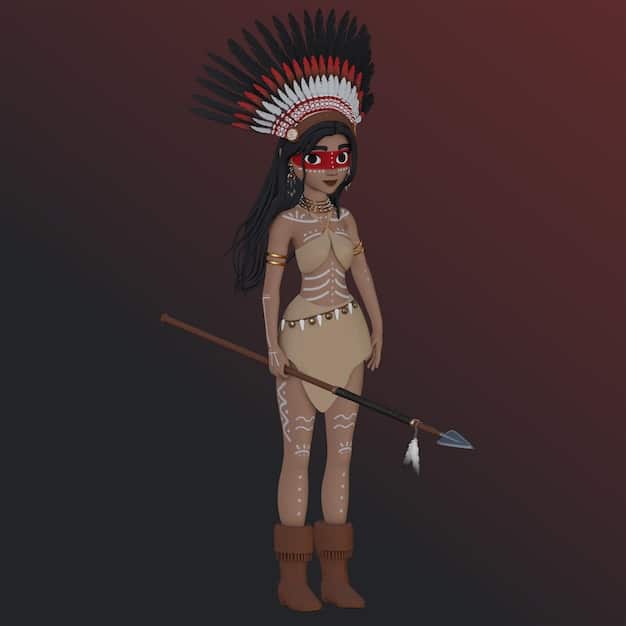
The archaeological record of conflict in Pre-Columbian America reveals a complex tapestry of warfare, ritual violence, and social dynamics, challenging simplistic notions of pre-contact societies and offering profound insights into human behavior.
Delving into the past often uncovers narratives far removed from romanticized ideals, particularly when examining human interaction. This is strikingly evident in the archaeological record of conflict: examining evidence of warfare and violence in Pre-Columbian America, which paints a vivid picture of complex societies engaging in organized warfare, ritualistic aggression, and various forms of interpersonal violence long before European arrival. Understanding these ancient conflicts requires meticulous analysis of bones, settlements, artifacts, and textual or iconographic evidence from diverse cultures across the continent.
Unveiling Pre-Columbian Conflict: A General Overview
The notion that Pre-Columbian American societies were uniformly peaceful, noble, and ecologically harmonious has largely been debunked by archaeological evidence accumulated over decades. While aspects of peace and cooperation certainly existed, a substantial and growing body of research confirms that conflict, in various forms, was an integral part of the social and political landscape across the Americas, from the Arctic to Patagonia. This evidence spans millennia and geographical regions, revealing diverse motivations and methodologies of conflict.
Early assumptions often downplayed the scale and frequency of pre-contact warfare, attributing skeletal trauma to accidents or small-scale skirmishes. However, advanced forensic archaeology, coupled with multidisciplinary studies, has revolutionized our understanding. We now recognize that warfare served multiple purposes: territorial expansion, resource control, captive taking for ritual sacrifice or labor, prestige, and the enforcement of social hierarchies. The forms it took were equally varied, from localized raids to large-scale, organized campaigns involving thousands of combatants.
The Spectrum of Violence: From Skirmishes to State-Level Warfare
Pre-Columbian violence manifested across a wide spectrum. At one end, individual acts of aggression or small-scale skirmishes might have arisen from personal disputes or territorial boundary infringements. On the other, highly organized state-level warfare, particularly evident in Mesoamerica and the Andes, involved complex logistics, specialized weaponry, and professional warrior classes.
- 🏹 Small-Scale Raids: Often conducted by smaller, egalitarian groups for resource control or revenge.
- ⚔️ Inter-chiefdom Conflict: More organized, involving alliances and larger forces, common in Mississippian cultures.
- 🛡️ State-Level Warfare: Highly structured campaigns by empires like the Aztec, Maya, and Inca, for tribute, territorial expansion, and political dominance.
The archaeological signatures of these different scales of conflict vary significantly. Small raids might leave subtle traces, such as isolated skeletal trauma or burnt dwellings, while large-scale warfare often left behind substantial evidence like heavily fortified settlements, mass graves, and widespread destruction layers in urban centers. Interpreting this evidence requires careful contextualization within the broader cultural and environmental landscape of the period.
Understanding these diverse expressions of conflict is crucial for a complete picture of Pre-Columbian societies. It moves beyond simplistic narratives, highlighting the sophisticated and often brutal realities faced by ancient populations, revealing their resilience, adaptability, and complex social structures amidst persistent tension and violence.
Skeletal Evidence: Reading the Scars of Ancient Battles
One of the most direct and compelling lines of evidence for conflict in Pre-Columbian America comes from human skeletal remains. Bioarchaeologists act as forensic detectives, meticulously examining bones for signs of violence. These “scars” can speak volumes about individual experiences and broader patterns of warfare, offering a chillingly intimate glimpse into ancient suffering and survival.
Evidence of trauma includes sharp-force injuries from blades or projectile points, blunt-force trauma from clubs or slingshots, and perimortem fractures (occurring around the time of death). Identifying healed fractures also indicates survival of violent encounters. The location and type of injuries often reveal patterns consistent with specific weaponry or combat styles. For instance, defensive wounds on forearms or hands suggest close combat, while skull fractures or embedded projectile points indicate lethal blows.
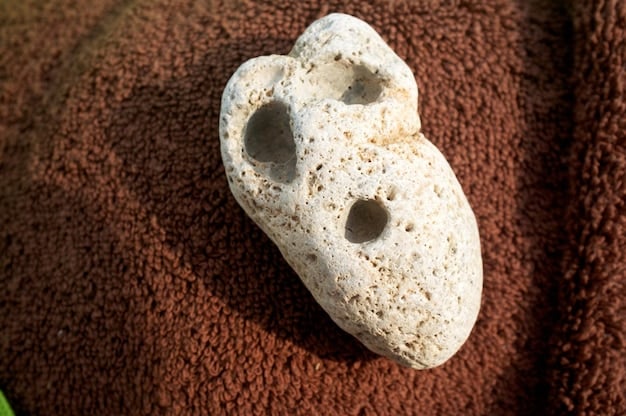
Trauma Patterns and Mass Graves: Echoes of Warfare
Beyond individual injuries, the analysis of trauma patterns within a population can provide insights into the frequency and nature of conflict. High incidences of head trauma, for example, are often linked to club warfare. The discovery of mass graves, especially those containing individuals with multiple perimortem injuries and signs of hurried burial, strongly suggests catastrophic events like battles, massacres, or ritual killings.
- 💀 Blunt-Force Trauma: Often observed on skulls and long bones, suggesting attacks with clubs, slings, or maces. Common in regions with a strong emphasis on hand-to-hand combat.
- 🔪 Sharp-Force Trauma: Cut marks on bones, particularly ribs or vertebrae, indicating injuries from obsidian blades, stone knives, or metal weapons where applicable.
- 🦴 Projectile Injuries: Embedded arrowheads or spear points found in bone are irrefutable evidence of projectile warfare.
Notable examples include the mass graves at Cerro de las Conchas in Peru, revealing victims with extensive trauma from Moche warfare, or the numerous findings from the Ancestral Pueblo region, where widespread skeletal violence points to periods of intense inter-group conflict. These findings challenge romanticized views of ancient life, exposing the harsh realities faced by many. The forensic detail extracted from these remains is invaluable, allowing researchers to reconstruct scenarios of violence and understand their societal impact. It highlights how violence shaped population movements, social structures, and cultural practices in profound ways.
Fortifications and Defensive Structures: Preparing for Conflict
Settlement patterns and architectural choices provide another critical layer of evidence for widespread conflict. Across Pre-Columbian America, numerous sites feature elaborate defensive structures, indicating a clear need for protection against external threats. These range from simple palisades to complex multi-layered fortifications surrounding entire cities, reflecting varying levels of perceived danger and organized aggression.
The investment of labor and resources into building defensive architecture signifies a consistent threat landscape. Communities would not undertake such massive projects unless the benefits of protection outweighed the costs of construction and maintenance. These structures often reflect the dominant warfare strategies of the period and region, offering clues about the types of attackers and the methods used in assaults.
Designing Defenses: Walls, Moats, and Strategic Placement
Defensive architecture was remarkably diverse, adapted to local terrain, available materials, and specific threats. Elevated locations, natural barriers strengthened by human engineering, and strategic placement near vital resources like water or agricultural land were common considerations. The design principles often aimed to maximize defensive advantage while channeling attackers into vulnerable kill zones.
- 🧱 Massive Walls: Especially prominent in Andean sites like Chan Chan and Sacsayhuaman, these walls demonstrate impressive engineering capabilities dedicated to defense.
- 🌊 Moats and Ditches: Often used in low-lying areas or to supplement walls, creating additional barriers to attackers.
- ⛰️ Hilltop Fortifications: Many communities built settlements on natural eminences, then augmented these with terracing, walls, and strongholds, as seen in parts of Mesoamerica and the Southwest.
The presence of these structures offers undeniable proof of conflict as a significant concern for ancient populations, driving urban planning and development. For instance, the monumental walls of the Mississippian site of Cahokia, or the fortified villages of the Iroquois, vividly illustrate societies organized not just for living, but also for defending against persistent threats from neighboring groups. This architectural evidence, combined with skeletal remains and artifact analysis, creates a compelling picture of a world where security was a paramount concern.
Weaponry and Iconography: The Tools and Depictions of War
Material culture provides significant insights into the nature of Pre-Columbian conflict. Recovered weaponry offers tangible proof of the tools used in combat, reflecting the technological capabilities and combat styles of different societies. Alongside actual weapons, iconographic evidence – depictions of warriors, battles, and sacrificial rituals in art – illuminates the cultural significance of warfare and violence within these ancient societies.
From simple clubs and slings to sophisticated obsidian swords (macuahuitl) and atlatls (spear-throwers), the evolution and regional variations in weaponry speak volumes about combat effectiveness and strategic thinking. Analysis of materials, craftsmanship, and wear patterns on surviving weapons allows archaeologists to understand their function and the skills required to wield them effectively.
Artistic Expressions of Conflict: Murals, Pottery, and Codices
Beyond functional tools, a wealth of iconographic evidence vividly portrays the role of conflict in Pre-Columbian life. Murals, carved stelae, pottery, and surviving codices (especially from Mesoamerica) are rich sources of information, depicting not just battle scenes, but also the treatment of captives, ritual sacrifices, and the regalia of warriors. These artistic representations often provide context for the archaeological findings, linking skeletal trauma to specific military practices or fortified sites to narratives of conquest and defense.
- 🏺 Moche Pottery: Famous for detailed depictions of warrior processions, combat, and the ritual sacrifice of captives, offering invaluable insights into their military and religious practices.
- 🎨 Maya Murals and Stelae: Show scenes of kings leading armies, battle victories, and the humiliation of captured enemies, emphasizing the role of warfare in royal legitimation.
📖 Aztec Codices: Illustrate military campaigns, tribute rolls, and the capture of victims for sacrificial rites, highlighting the economic and religious aspects of Aztec expansionism.
These varied forms of evidence, from the mundane tool of war to the grand artistic narrative, collectively underscore the pervasive nature of conflict across the Pre-Columbian Americas. They reveal not only the physical realities of combat but also the ideological frameworks that supported and glorified violence, making it an undeniable force in shaping social structures and belief systems. The detailed insights derived from these sources are crucial for understanding the motivations and consequences of ancient warfare.
Environmental and Social Pressures: Drivers of Ancient Conflict
While the evidence of conflict is clear, understanding its underlying causes is a more complex endeavor. Warfare in Pre-Columbian America was rarely monocausal; instead, it arose from a confluence of environmental pressures, population dynamics, political ambitions, and social structures. Archaeologists and anthropologists often look for correlations between periods of increased conflict and factors such as resource scarcity, demographic shifts, or the rise of centralized power.
Environmental fluctuations, particularly prolonged droughts or shifts in climate patterns, could impact agricultural yields, leading to competition over fertile land, water sources, or hunting grounds. As populations grew, pressure on finite resources intensified, creating fertile ground for inter-group hostilities. These pressures could destabilize existing social orders and trigger raids or larger-scale conflicts.
Resource Competition and Population Density: Fueling Tensions
The correlation between resource scarcity and conflict is well-documented in many regions. For example, in the American Southwest, periods of prolonged drought often coincide with archaeological evidence of increased violence and mass migration, suggesting that environmental stress played a significant role in triggering conflict among Ancestral Pueblo and other groups. This pattern is not unique to the Southwest; similar dynamics are observed in parts of Mesoamerica and the Andes.
Moreover, rising population densities could, independently or in conjunction with environmental stressors, exacerbate tensions. As communities grew larger and settled more densely, the likelihood of territorial disputes, resource overlaps, and competition for social prestige increased. The development of complex societies, with their hierarchies and specialized labor, also brought new incentives for warfare, such as the acquisition of labor, tribute, or sacrificial victims.
In Mesoamerica, the emergence of powerful city-states in environments like the Maya lowlands led to intense rivalry and frequent warfare for political dominance and control over trade routes. The motivations behind these conflicts were deeply intertwined with economic and ideological factors, illustrating the intricate web of causes behind ancient violence. Analyzing these interconnections is vital for a holistic understanding of conflict’s role in Pre-Columbian societies, moving beyond simple descriptions of battles to explore their deeper roots.
Case Studies: Regional Manifestations of Pre-Columbian Warfare
To fully appreciate the diversity and complexity of Pre-Columbian conflict, it is essential to examine specific regional case studies. While general patterns exist, the practical expression of warfare and violence varied significantly across the vast expanse of the Americas, shaped by local environments, technological advancements, cultural beliefs, and political structures. These case studies help to illustrate the nuanced nature of the archaeological record of conflict.
From the ritualized Flower Wars of the Aztecs to the brutal Moche encounters in the Andean coast and the defensive struggles of Mississippian mound builders, each region presents a unique narrative of conflict, highlighting different motivations, scales, and outcomes. These insights are invaluable for building a comprehensive understanding of ancient American societies.
Mesoamerican Warfare: Ritual, Conquest, and Tribute
In Mesoamerica, warfare was deeply integrated into religious beliefs, political structures, and economic systems. The Maya, for example, engaged in “star wars” often tied to astronomical events, aimed at capturing elite individuals for ritual sacrifice or political leverage rather than outright territorial expansion. While territorial control and tribute certainly played a role, the capture of high-ranking individuals was paramount for legitimizing rulers and appeasing deities.
- 🌴 Classic Maya: Warfare often focused on captive taking and ritual sacrifice, as depicted on stelae and murals.
- ⛰️ Aztec Empire: Utilized highly organized campaigns to expand their vast tribute empire, integrating military prowess with their religious cosmology and sacrificial practices.
- 🌪️ Teotihuacan: Evidence suggests a major military presence and influence across Mesoamerica, though the nature of their conflicts is still debated.
The Aztecs, on the other hand, waged “Flower Wars” to obtain sacrificial victims, but also expanded their empire through strategic conquests, demanding tribute in goods and labor from subjugated client states. Their military organization was sophisticated, with professional warriors, specialized units, and extensive logistical support for campaigns. The scale and motivations significantly differed from the Maya, reflecting distinct societal goals and environmental contexts.
Further south, among the Moche culture of the Peruvian coast, warfare appears to have been particularly brutal, characterized by mass sacrifice of captured warriors as depicted vividly in their ceramics and validated by skeletal finds. The Mochica engaged in intense conflicts, possibly for control over rich coastal resources and trade routes, with their elite warriors playing a central role in both battle and ritual. These examples demonstrate the diverse yet profound ways conflict was woven into the fabric of life across different complex societies.
The Legacy and Future of Conflict Archaeology in the Americas
The study of the archaeological record of conflict: examining evidence of warfare and violence in Pre-Columbian America continues to evolve, pushing the boundaries of what we understand about ancient societies. Advances in technology, such as LiDAR for identifying hidden fortifications and isotopic analysis for tracking population movements, are constantly providing new avenues for research. The field is also increasingly interdisciplinary, drawing on insights from forensic anthropology, ethnohistory, political science, and environmental studies.
The legacy of this research is profound. It challenges eurocentric narratives that once portrayed Indigenous Americans as either uniformly peaceful or inherently savage, instead revealing complex and dynamic societies. It underscores that conflict, while often destructive, was also a powerful catalyst for social change, innovation, and the formation of political entities, including states and empires. Understanding this past can offer valuable lessons for the present, particularly concerning human responses to resource scarcity, political ambition, and intergroup relations.
New Frontiers in Understanding Ancient Violence
Future research will likely continue to refine our understanding of the motivations, scale, and consequences of Pre-Columbian conflict. Exploring how climate change impacted conflict patterns, delving deeper into the psychological and social impacts of violence on individuals and communities, and examining the role of women and children in conflict scenarios are all growing areas of interest. Furthermore, comparative studies across different regions of the Americas and with Old World conflicts can yield richer insights into universal and culturally specific aspects of human warfare.
- 🔬 Advanced Dating Techniques: Refining chronologies of conflict events.
- 🌍 Remote Sensing: Discovering previously unknown fortifications and battlegrounds.
- 🧬 Ancient DNA Analysis: Tracing genetic relationships between warring groups and identifying victims/perpetrators.
The archaeological record is a living archive, continuously revealing new perspectives on the human condition. As new evidence emerges and methodologies advance, our understanding of warfare and violence in Pre-Columbian America will only become more nuanced and detailed. This ongoing work is crucial not only for historical accuracy but also for informing contemporary discussions on conflict resolution, social resilience, and the enduring complexities of human nature.
| Key Aspect | Brief Description |
|---|---|
| 💀 Skeletal Evidence | Direct proof of trauma (fractures, embedded projectiles) indicating warfare and violence. |
| fortification | Walls, moats, and strategic settlements built for defense, revealing sustained threats. |
| 🏹 Weaponry & Art | Tools of war and artistic depictions of battles and warriors illustrate combat methods and cultural significance. |
| 🤝 Drivers of Conflict | Environmental stress, resource competition, and socio-political ambitions as catalysts for violence. |
FAQs About Pre-Columbian Conflict
▼
Archaeological evidence suggests that some form of conflict was present across a wide range of Pre-Columbian societies, though its scale, frequency, and motivations varied greatly. While not all groups engaged in large-scale warfare, evidence of interpersonal violence or small skirmishes is widespread.
▼
Key indicators include human skeletal remains showing trauma, fortified settlements, depictions of warriors and battles in art (iconography), and the presence of specialized weaponry. Mass graves with signs of violence are particularly strong evidence of conflict events or massacres.
▼
Environmental stressors like prolonged droughts or resource scarcity increased competition over vital resources such as fertile land, water, and game. This ecological pressure often exacerbated existing tensions, leading to raids, territorial disputes, and larger organized conflicts among groups.
▼
No, motivations for warfare were diverse. While territorial expansion and resource control were common, other reasons included acquiring captives for ritual sacrifice, gaining prestige for rulers or warriors, enforcing tribute demands, or even purely ritualistic “flower wars” as practiced by the Aztecs.
▼
Modern archaeological techniques, including advanced forensic bioarchaeology and remote sensing, provide more detailed and accurate data. This has moved the understanding of Pre-Columbian societies beyond simplistic views, revealing them as complex, dynamic, and often engaging in sophisticated forms of warfare and violence.
Conclusion
The archaeological record of conflict in Pre-Columbian America offers a compelling and multifaceted narrative, revealing that warfare and violence were significant forces shaping ancient societies. Far from being uniformly peaceful, these cultures engaged in a spectrum of aggressive behaviors, driven by environmental pressures, political ambitions, and deep-seated cultural beliefs. The meticulous study of skeletal remains, fortified settlements, weaponry, and intricate iconography continues to deepen our understanding, shedding light on the harsh realities and complex dynamics of human interaction across millennia. This ongoing research not only enriches our historical comprehension but also provides poignant reflections on the enduring role of conflict in human civilization.
